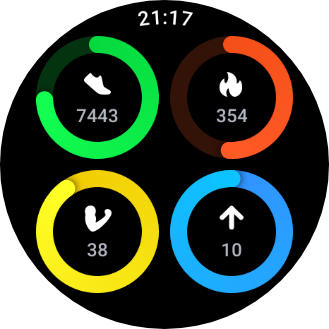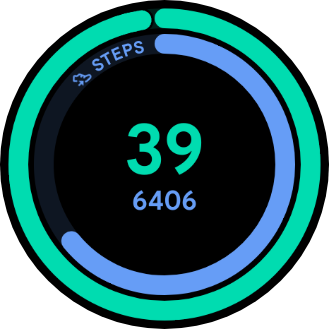[ad_1]
I have embraced the Android smartwatch journey since the very first smartwatch that I owned back when the latest and greatest smartwatches you could get were running the first iteration of Wear OS (Android Wear), which came out in 2014. So for the last 10 years or so I have had some form of Android-powered wearable on my wrist. I have dabbled with various non-smart platforms as well. I have also used Samsungs first offerings which were driven by their Tizen OS. Some of these platforms I have liked some I have not. However, I have normally always ended up circling back to Wear OS for my wrist-mounted companion. Now like most wearable users, I have accepted the compromise of having a very short battery life on my watch which disappointed me and limited the actual functionality and usefulness of the device. Well fortunately it looks like there may be some light at the end of the horizon and it has not come from one of the well-known wearable players instead it has come from OnePlus.
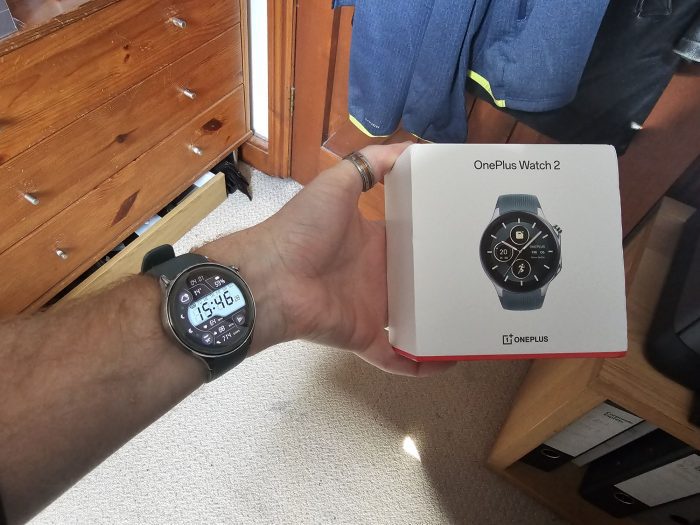 I am of course talking about the recently announced OnePlus Watch 2, which I have had the pleasure of using for the last few weeks. OnePlus launched this device with a smallish off-site event at MWC in February and I have been eager to get my muggy mits on one since they announced it. They had one big headline claim that this was a Wear OS smartwatch that could last for 4 days without having to recharge it! This proved to be very intriguing to me and I had to get one.
I am of course talking about the recently announced OnePlus Watch 2, which I have had the pleasure of using for the last few weeks. OnePlus launched this device with a smallish off-site event at MWC in February and I have been eager to get my muggy mits on one since they announced it. They had one big headline claim that this was a Wear OS smartwatch that could last for 4 days without having to recharge it! This proved to be very intriguing to me and I had to get one.
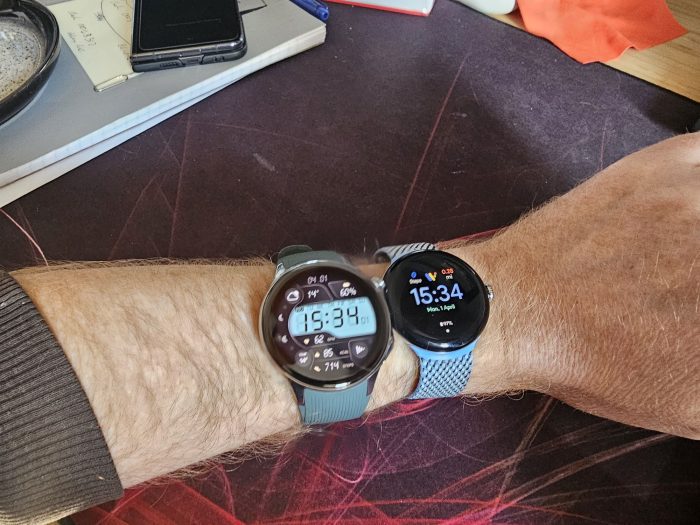 Now before the arrival of the OnePlus Watch 2, I had been using my faithful and reliable Pixel Watch 2 (Wifi). I was able to normally stretch the battery to this out to 2 days with light use. My use case is very light as I only really have the watch as a way of monitoring my steps during the day and my sleep at night. I also have notification coming through from my normal daily which is my Pixel Fold. I was not using always on display and I did not have other always on display active. I also ran a very dark theme which extended the battery as best as it could. I feel that is important to cover this as it will give you a metric of what can be reasonably expected for my usage case.
Now before the arrival of the OnePlus Watch 2, I had been using my faithful and reliable Pixel Watch 2 (Wifi). I was able to normally stretch the battery to this out to 2 days with light use. My use case is very light as I only really have the watch as a way of monitoring my steps during the day and my sleep at night. I also have notification coming through from my normal daily which is my Pixel Fold. I was not using always on display and I did not have other always on display active. I also ran a very dark theme which extended the battery as best as it could. I feel that is important to cover this as it will give you a metric of what can be reasonably expected for my usage case.
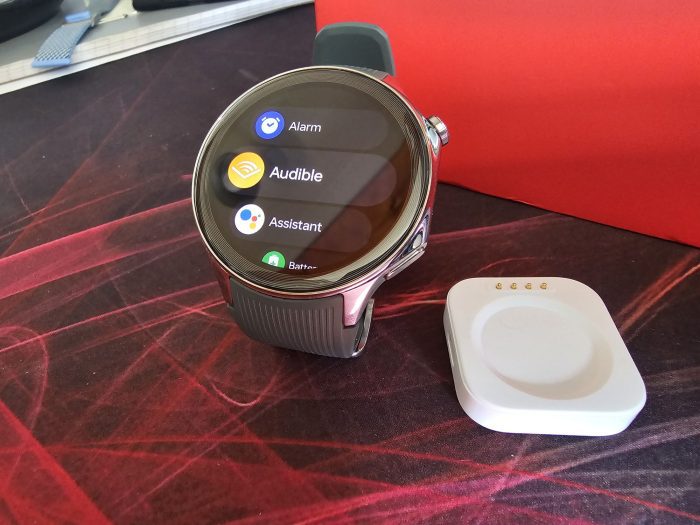 Normally for a review, I will split it up into two different posts the first of which will be an unboxing with some very quick first impressions. However, I was so keen to get the watch on my wrist and start using it that I skipped this step and started using it immediately. I have now shot a brief tour of the device for you to enjoy along with the box contents which you can see below.
Normally for a review, I will split it up into two different posts the first of which will be an unboxing with some very quick first impressions. However, I was so keen to get the watch on my wrist and start using it that I skipped this step and started using it immediately. I have now shot a brief tour of the device for you to enjoy along with the box contents which you can see below.
Design
The watch has a nice good-looking design and mixes the nuances of being subtle but also has a decent-sized screen for me without appearing too much. There is some clear inspiration for the OnePlus phone lines of late in particular the OnePlus 11, OnePlus 12 and OnePlus Open
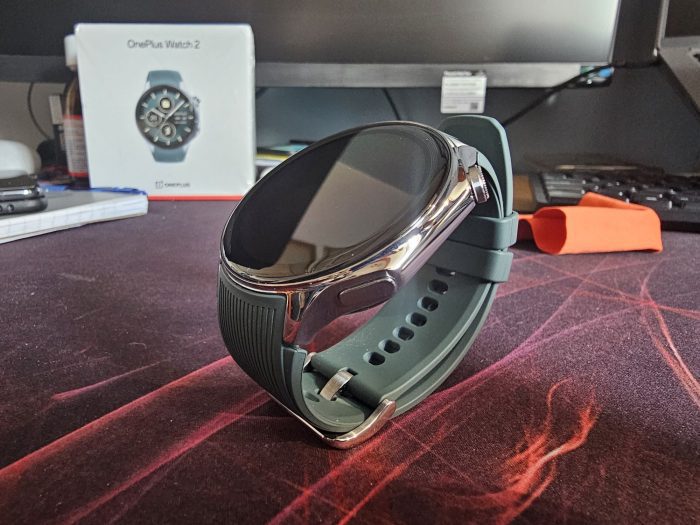 In terms of size, it is on the large size with a screen measuring 1.43″ which is significantly larger than my Pixel Watch 2 which came in at 1.2″ Now while 0.2″ doesn’t sound much it makes a big difference when it comes to actually using the screen more on this later though.
In terms of size, it is on the large size with a screen measuring 1.43″ which is significantly larger than my Pixel Watch 2 which came in at 1.2″ Now while 0.2″ doesn’t sound much it makes a big difference when it comes to actually using the screen more on this later though.
The screen is also significantly tougher than the Pixel Watch 2 as it is made of sapphire crystal glass instead of the Gorilla Glas 5 used on the Pixel Watch 2 Bezels on both watches are bigger than what I would have liked especially when compared with the best from Samsung however this is something i can get along with without too many issues.
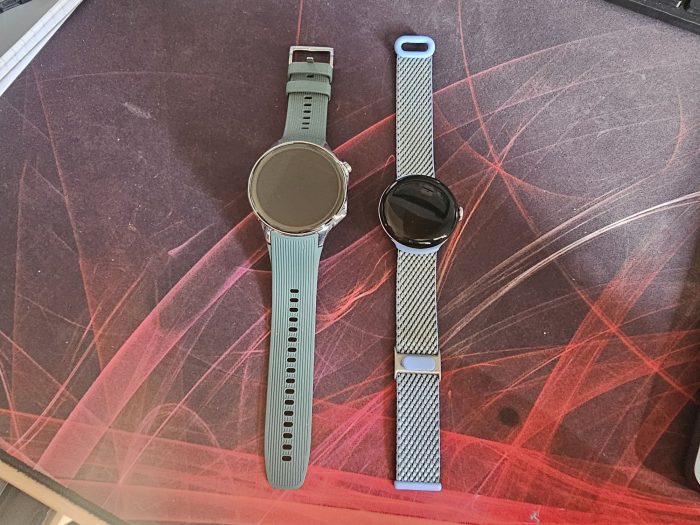
I am a bit torn on the next design choice as on both the Pixel Watch 2 and the OnePlus Watch 2 there is no raised physical bezel on the screen which is great for the look and the design of the watches as it makes a smooth uninterrupted surface which is great to interact with using your fingers. However it does mean that the first thing to come into contact with a surface is glass, and as a great man has said many times “Glass is glass and glass breaks” (Thanks Zak @jerryrigeverything). 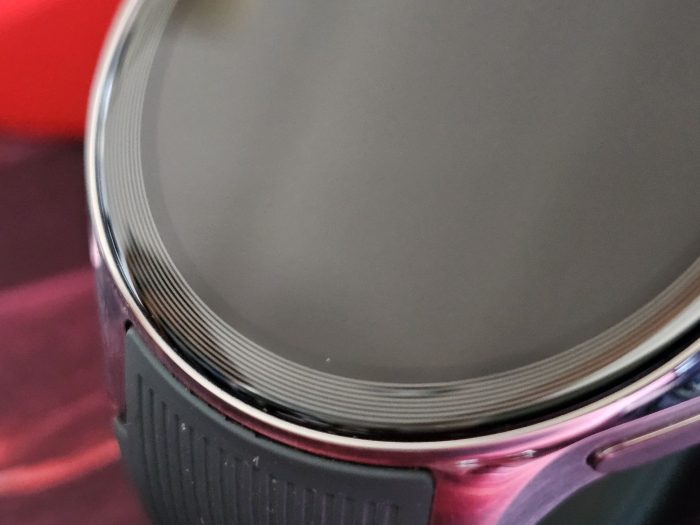 The lack of the raised bezel does however mean it is less bulky allowing you to slide a shirt sleeve over the top of the watch which is very welcome when you are breaking out the formal wear.
The lack of the raised bezel does however mean it is less bulky allowing you to slide a shirt sleeve over the top of the watch which is very welcome when you are breaking out the formal wear.
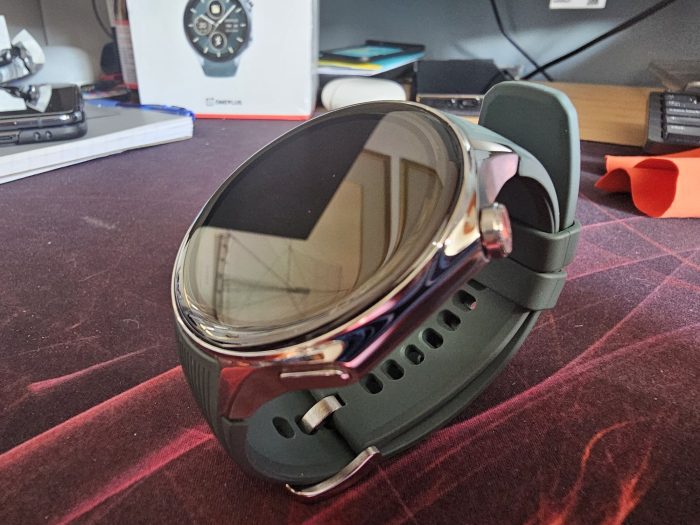 The OnePlus Watch 2 comes in two different colour ways which have appropriate coloured straps alongside the different watch body colours. I have got a Radient Steel version here which comes with a green fluroelastomer band. The other colour Black Steel will come with a Black version of the same strap. The strap is plenty comfortable and is easily swappable with a standard 22m strap thanks to the universal strap lugs being used.
The OnePlus Watch 2 comes in two different colour ways which have appropriate coloured straps alongside the different watch body colours. I have got a Radient Steel version here which comes with a green fluroelastomer band. The other colour Black Steel will come with a Black version of the same strap. The strap is plenty comfortable and is easily swappable with a standard 22m strap thanks to the universal strap lugs being used.
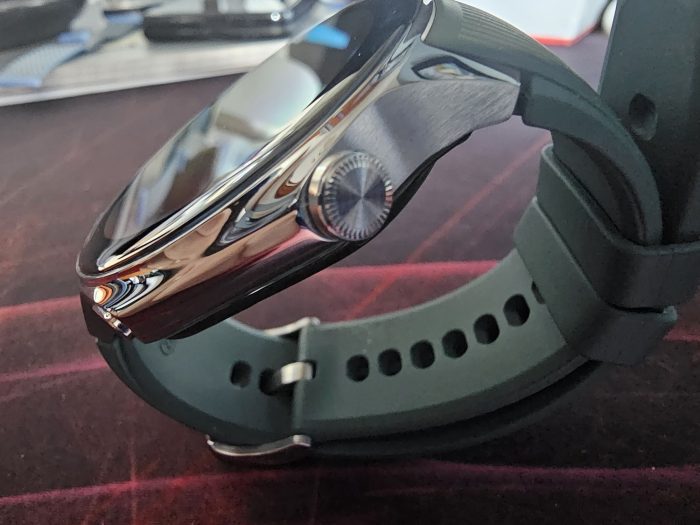 On the controls side we have got two side-mounted buttons one of which looks like it should have been a rotating crown but is not functional. A lot of talk has been made about why this was used but not enabled in the software as we have crowns on other watches that are used for navigating the software. OnePlus states that by having it as a free spinning crown the chances of it breaking are reduced. A lot of my contemporaries are also speculating that this will be a feature that is opened up by software in the future. I have not seen any evidence for this so I remain undecided, personally, it is not something I ever used much on my Pixel Watch 2 so it doesn’t bother me.
On the controls side we have got two side-mounted buttons one of which looks like it should have been a rotating crown but is not functional. A lot of talk has been made about why this was used but not enabled in the software as we have crowns on other watches that are used for navigating the software. OnePlus states that by having it as a free spinning crown the chances of it breaking are reduced. A lot of my contemporaries are also speculating that this will be a feature that is opened up by software in the future. I have not seen any evidence for this so I remain undecided, personally, it is not something I ever used much on my Pixel Watch 2 so it doesn’t bother me.  Out of the box, this crown/button is set up as the home button with a long press activating Google Assistant. The second lower button is for Power on a long press and other functions. It can be configured in the watch menu under Controls. I have mine set for one press to open the most recently used app and two will open the Sleep mode.
Out of the box, this crown/button is set up as the home button with a long press activating Google Assistant. The second lower button is for Power on a long press and other functions. It can be configured in the watch menu under Controls. I have mine set for one press to open the most recently used app and two will open the Sleep mode.
On the back of the watch, we have of course the sensor array which hides a multitude of sensors for health tracking shenanigans. The sensors are made up of an optical heart rate sensor and an optical pulse oximeter.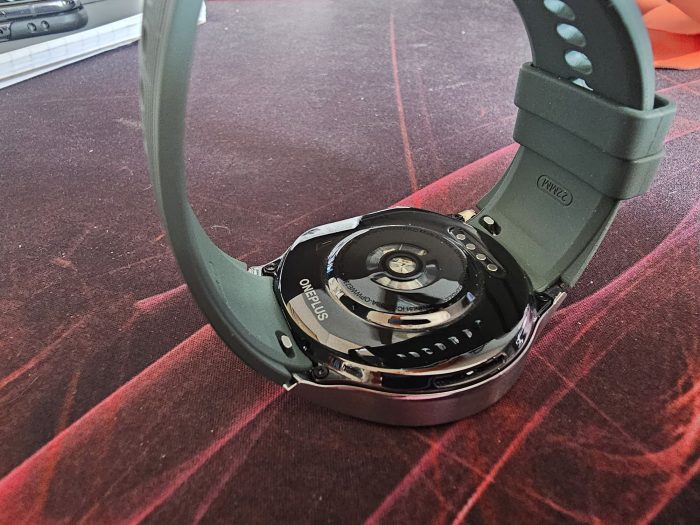 It is also where we will find the Pogo Pins for charging the watch which is a bit disappointing to see as it means that this is a proprietary charger. This is again no different from the Pixel Watch 2 which also now uses Pogo Pins for charging which I discovered at my cost whilst I was out at MWC as my watch ran out of charge on the second morning of the trip. of course, I didn’t have my charger and due to the lack of wireless charging I was left unable to recharge my watch despite having multiple devices capable of delivering reverse wireless charge. In fairness to the Pixel Watch 2, I would have had the same issue with charging the OnePlus Watch 2 but based upon my usage to date I wouldn’t have needed to as the battery would have run out!
It is also where we will find the Pogo Pins for charging the watch which is a bit disappointing to see as it means that this is a proprietary charger. This is again no different from the Pixel Watch 2 which also now uses Pogo Pins for charging which I discovered at my cost whilst I was out at MWC as my watch ran out of charge on the second morning of the trip. of course, I didn’t have my charger and due to the lack of wireless charging I was left unable to recharge my watch despite having multiple devices capable of delivering reverse wireless charge. In fairness to the Pixel Watch 2, I would have had the same issue with charging the OnePlus Watch 2 but based upon my usage to date I wouldn’t have needed to as the battery would have run out!
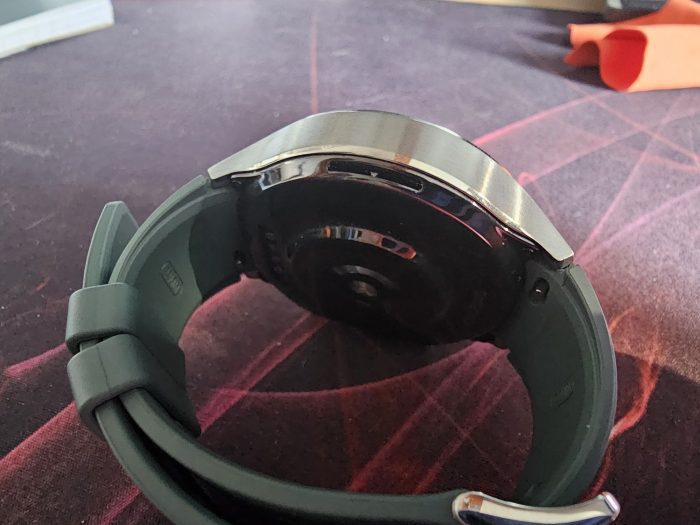 The only other thing of note down here is the speaker which is more than loud enough for notifications and the occasional if embarrassing hands-free call when you trigger it by accident!
The only other thing of note down here is the speaker which is more than loud enough for notifications and the occasional if embarrassing hands-free call when you trigger it by accident!
Other items included with the watch are the obligatory OnePlus charging cable albeit not in OnePlus Red, we also have the removable charging puck which of course has the Pogo Pins as previously mentioned. On one side it has a USB Type C input capable of supporting OnePlus 7.5W VOOC Fast Charging, which means that when it comes to charging the watch, it is done quickly from zero to full in under 60 mins!
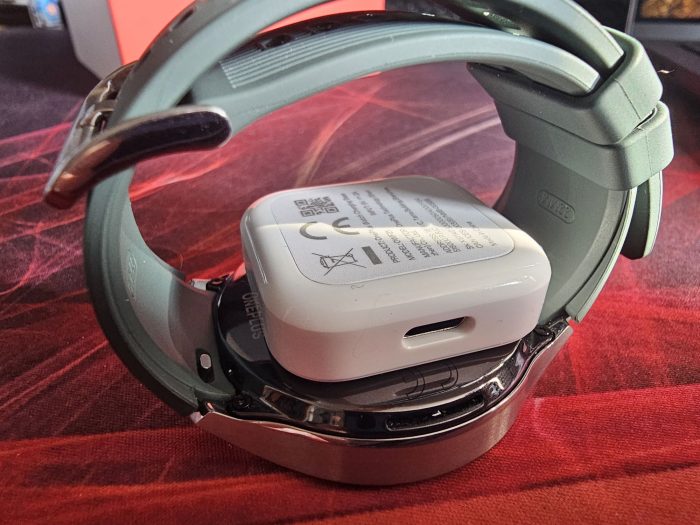 I do like the idea of the removable sharing puck/base as it means that I don’t have to unplug the whole cable which is normally wrapped around or secured to my bedside table or desk in some elaborate way. With the puck, I can pick it up and throw it in my bag or pocket as I head out for work and then plug it back in when I need it to any USB Type C Cable.
I do like the idea of the removable sharing puck/base as it means that I don’t have to unplug the whole cable which is normally wrapped around or secured to my bedside table or desk in some elaborate way. With the puck, I can pick it up and throw it in my bag or pocket as I head out for work and then plug it back in when I need it to any USB Type C Cable.
That about wraps up the design of the watch and now it is time to do a deep dive into the hardware of the watch which is where things get really interesting.
Specs comparison vs Pixel Watch 2
| Category | OnePlus Watch 2 | Pixel Watch 2 |
|---|---|---|
| Processor | Snapdragon W5 + BES 2700 MCU | Snapdragon W5 Gen 1 + Cortex M33 MCU |
| Memory | 2GB RAM + 32GB storage | 2GB RAM + 32GB storage |
| OS | Wear OS 4 + RTOS | Wear OS 4 |
| Display | 1.43-inch (466×466) AMOLED | 1.2-inch (384×384) AMOLED |
| Row 4 – Cell 0 | 326ppi, 1,000 nits, 60Hz | 320ppi, 1,000 nits, 60Hz |
| Materials | Stainless steel case and buckle, fluoroelastomer strap | Aluminum case, fluoroelastomer band |
| Protection | 5ATM, IP68, MIL-STD-810H, 2.5D sapphire crystal glass | Gorilla Glass 5; 5ATM; IP68 |
| Navigation | Touchscreen, haptic crown, side button | Touchscreen, inactive crown, side button |
| Battery | 500mAh (100 hours) | 306mAh (24 hours w/ AOD) |
| Connectivity | Bluetooth, Wi-Fi, NFC, GPS (Dual-frequency L1 + L5), GLONASS, GALILEO, BeiDou, QZSS | LTE (optional), Bluetooth 5.0, Wi-Fi 802.11 b/g/n 2.4GHz, NFC, GPS L1, GLONASS, BeiDou, Galileo, QZSS |
| Charging | Pogo Pin | Pogo Pin |
| Sensors | Accelerometer, altimeter, ambient light, compass, gyroscope, HRM, SpO2 | Accelerometer, altimeter, ambient light, cEDA, compass, ECG, gyroscope, magnetometer, optical heart rate, skin temperature, SpO2 |
| Dimensions | 47 x 46.6 x 12.1mm | 41 x 41 x 12.3mm |
| Weight | 49g without strap | 31g without strap |
| Colors | Black Steel, Radiant Steel | Matte Black, Polished Silver, Champagne Gold |
Hardware
So why is this more interesting than any other Wear OS 4.0 Smartwatch currently on the market? Well, it is very simple this watch has two brains, however, it goes further than that. The watch is capable of using both these brains as and when needed and it does so seamlessly. This is the key difference and what separates this from other long-life Android smartwatches like the TicWatch Pro 3 G Ultra GPS that I used to have and the newer TicWatch Pro 5 from Mobvoi.
So the Mobvoi watches used to allow you to have the option of a low power mode which will effectively run the watch like a non-smart watch. This did help to stretch out the watch’s battery life but the switching was not the greatest experience and it made for a laggy UI (based on My Experience of TicWatch Pro 3 Ultra GPS).
The OnePlus Watch 2 use the new Snapdragon W5 Gen 1 when it is working on parts of the UI that require Wear OS 4.0 to function. i.e. if using 3rd party apps like Spotify Strava etc. However, in normal operational mode, it will run RTOS (Real Time OS) for simpler tasks such as health tracking processes etc. This means that you will be effectively running 2 OS platforms in the same container. Now for this to work Google have needed to address the way Wear OS works and this is the first watch to have this new system in place.
If I am being honest based on my experience so far this is the way forward as it works really well. If I didn’t know what was going on and I was new to smartwatches I would assume this is how they all work. I have yet to come across anything in using the watch that has slowed down or lagged. I can run the watch the way I want to with the features I want in place and I can use a more complex watch screen without having to worry about the battery life.
Coming back to battery life this is powered by a 500 mah battery which has as you would expect from the above two estimated longevities. In Smart Mode (how I have been using it) you can expect anything up to 100hrs ( have achieved this). In Power Saving mode you can expect up to 12 days of runtime, however, this mode will lose the Wear OS features as it relies solely on RTOS. There is also of course the Heavy Smart mode and this is when you are using the watch with all the bells and whistles on ie using Always on Display, and a Third-party watch face. If you are interested in the differences in the power modes as they are defined by OnePlus then check out these images below.
I liken the way the watch works to a Hybrid Car which will work on battery power when it is just trundling along in town but then when you hit the accelerator and ask for more power you get the petrol engine kick in. You don’t notice the difference in terms of the driving as it just transitions between the power units for you with the only difference being you can hear the engine working when the power is applied.
I think this is a great way to solve the problem of the short battery life for Android-powered smartwatches and I am excited to see where this can be taken and developed in the future. It is perfect of course not but in terms of the underlying hardware experience it is great now we just need the software to match.
Software
This is really what is going to make or break the Dual-Engine Architecture and I am happy to say for the most part it does work well, however, this is new software on a new system so it will of course come with some teething issues. These limitations come from the low-powered RTOS as this is essentially a “dumb OS” in the simplest possible terms. What I mean about that is that any third-party apps needs to run on the Wear OS side of the architecture. This brings some limitations to the watch.
An example is that I wanted to run the same watch face that I run on my Pixel Watch 2 and I was advised that doing so will dramatically reduce battery life. Okay fine, I will run an RTOS one, if I want to use Google Fit for complications on a watch face then I again get the warning message saying reduced battery life.
Now, whilst this is by no means a deal breaker you can just accept that the running of the Wear OS app will require more power. I would like to see a low-power alternative natively created by Google as they will hopefully offer a better alternative to those offered by RTOS. What we end up with is a bit of a hodgepodge of health and fitness readings which contradict each other.
If I am being honest this is one of the reasons why I ended up moving to the Pixel Watch 2 as I can use my Google Fit apps with no real problem. Now dont get me wrong Google has not got this 100% correct either as they also have Fitbit which is also active and only offered as a trial version for the full features, which some could say is worse. In an ideal world, we would have a version of Google Fit Lite that could run on a low-power custom Tensor chipset. Sadly though we don’t have that yet, this is the next best thing we have.
I have been using the Oneplus Watch 2 to track watch to track my steps with both the RTOS Step counter and the Google Fit step counter running as well and the results from a recent walk are shown below.
- RTOS Health Tracker
- Wear OS Google Fit
Unfortunately, as you can see there is a difference between the total on both services. As to which one is wrong, I don’t know but I have grown to rely on Google Fits tracking over a bunch of different smartwatches in the past so I am inclined to stick with Google here.
The main feature of the RTOS operating system is of course the Health Tracking service OHealth here is a video of the overview app on the watch.
It is much more than the actual watch software as OHealth is the companion app. for the phone. Without the OHealth App, you will not actually be able to pair the phone watch with the phone. This is very similar to the likes of the latest Samsung Watch as you need to use the Samsung Wear app to set one for the new generation watches. You have to use this watch for pulling data from the watch along with setting all your functions on the watch up. I have included some screenshots below for the OHealth App so you can check it out.
This is what things look like on the phone but on the smartwatch, as you saw above it is much simpler.
Overall in terms of the software I am left a bit torn as I want to love the OnePlus Watch 2 and I do really like the hardware but there are just some things about the software that annoy me a bit too much for my liking. There are also some features that I have grown accustomed to with my Pixel Watch 2 which would be missed, The main one being something that will not really affect the normal user but for me is nearly enough to be a deal breaker. I am talking about the ability to transfer the watch from one phone to another without having to complete a full reset of the phone.
At the moment if you want to move from one phone to another then the only way to do that is to delete the pairing of the other phone with the watch and then set the pairing again on the phone which loses all your settings and also any OHealth fitness data that had been accumulated. This feature is a core feature of Wear OS 4 and it should be present. I can only presume that it is missing due to the complicated setup of the RTOS being active all the time and Wear OS then sitting beside it. Hopefully, this is something that Google and OnePlus will keep working on it!
Just one final note before I move on the OnePlus Watch 2 will only run on Android as you cannot get the OHealth app currently on iOS, who knows if this will change in the future but it is something to be aware of if you are using an iOS device.
That pretty much concluded my thoughts about the OnePlus Watch 2 software.
Conclusion
I really do think that the OnePlus Watch 2 is the smartwatch to usher in the next-gen of Android Wear OS that uses this new Dual-Engine Architecture. There will as always be work that needs to be done to iron out the kinks which have come out on the OnePlus Watch 2. I do feel that Google and OnePlus are good partners in this development as Google can work out the issues on a device that essentially isn’t part of their own hardware lineup with little risk if it were to go wrong. OnePlus however benefit by having Google’s expertise in the Wear OS field whilst also getting the tech nerds like me all buzzing about their newest wearable.
I suppose the real question is would I buy one for myself and should you be considering one for yourself as well?
So on the first question, Would I buy one for myself? I am very very tempted as all the little niggles bar one I could certainly live with given the massive benefit that the Dual-Engine Architecture offers me in terms of Battery life. I don’t use that much in the way of third-party apps on my smartwatch so it is one watch that I am strongly considering.
The second question I posed is for you the reader should you buy one? Well if you use a lot of third-party apps on your smartwatch then I would say that this is not the watch for you, get a Pixel Watch 2 or Galaxy Watch 6, both of these options will give you a competitive battery life with the Galaxy giving slightly more than the Pixel. If however like me battery life is one of the key factors and you can live with some of the RTOS niggles (which to be honest are minor) then grab one of the OnePlus Watch 2 and relax into knowing that you have a few days between charges instead of a few hours!
The Oneplus Watch 2 is available from https://www.oneplus.com/uk/oneplus-watch-2 now for £299, however, keep an eye on their website and Socials as they do like to launch offers all year around.
[ad_2]
Source link
